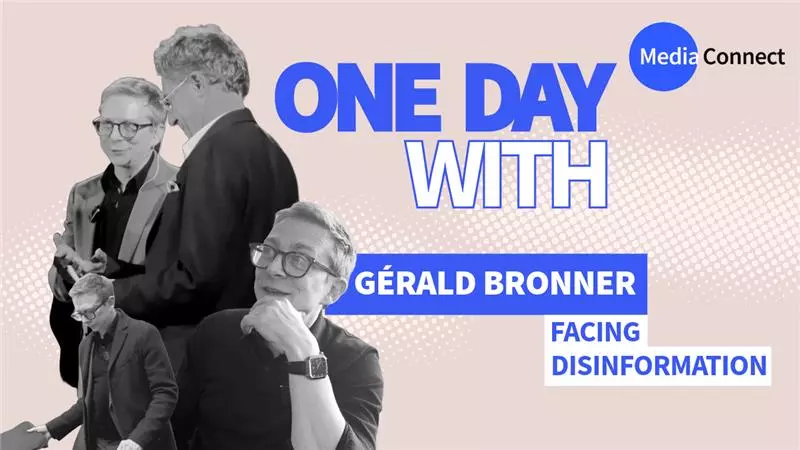What are the differences?
Disinformation is probably the most well-known. It refers to deliberately fabricated information intended to deceive. "The combination of false content and a clear intention to manipulate," summarizes Arnaud Mercier, director of the digital Information-Communication program at Panthéon-Assas University. According to Manon Berriche, these are "often attributed to an institution, a political party, or a country, usually with economic or political motives." This manipulation is all the more dangerous because it can imitate press codes, as shown by the Doppelgänger operation: a disinformation campaign run since the beginning of the war by the Russian agency Social Design Agency (SDA), which impersonated European media to spread narratives favorable to the Kremlin.
Malinformation is based on real facts but taken out of context to harm a person, organization, or country.
For example, the 2022 murder of teenager Lola was "largely exploited by far-right figures to bolster their political programs," notes Manon Berriche. Definitions vary. Arnaud Mercier, citing the work of François Heinderyckx, journalism professor at the Free University of Brussels, defines malinformation as "information that is not deliberately falsified but results from poor handling of information due to a lack of respect for basic journalistic principles." For instance, when several media outlets wrongly announced in 2019 that Xavier Dupont de Ligonnès had been found in Scotland.
Misinformation refers to the spread of false or poorly established information without malicious intent. "Often based on excessive trust or an emotional reaction," estimates Arnaud Mercier, coordinator of DE FACTO, a European project fighting disinformation. More common especially on health or scientific topics, "misinformation differs from rumor by being factually false," stresses Manon Berriche. "Thinking they are doing good, some may share a supposedly effective remedy, even if scientific consensus denies it," concludes the educator.
How to characterize intention?
When the term "fake news" appeared in 2016, the focus was mostly on misinformation and disinformation, "without focusing on the instrumentalization of true information and their agenda-setting," laments Manon Berriche. To try to identify the intention behind spreading false information, several factors are considered the profile of the speaker: "When a politician relays false info about X, knowing their political stance allows hypotheses on their intent," says Manon Berriche. Reputation analysis of actors who have already spread false info or those with great credibility provides clues, adds Arnaud Mercier.
Another criterion is acknowledging mistakes: "A disinformer never apologizes. They deny and retreat into an alternative reality when caught," explains Arnaud Mercier. In contrast, when the supposed discovery of Xavier Dupont de Ligonnès occurred, all media recognized their errors and apologized. However, "sensationalist editorial lines sometimes suggest economic motives," warns Manon Berriche. Media may deliberately spread poorly established information "to generate clicks."
The virulence of the message is also an indicator: “Degrading or aggressive elements may reveal a desire for revenge,” judges Arnaud Mercier. “It becomes more difficult with the general public. Even if there may be signs of politicization, it’s quite complex to know an ordinary internet user's intention,” nuances Manon Berriche.
What are the societal impacts?
"Effects are very difficult to measure. Someone can be skeptical about vaccines yet choose to get vaccinated or support a personality but decide not to vote for them," notes the researcher.
"It’s hard to suppose that a single exposure to one content could radically change someone’s opinion; rather, it’s repeated exposure within a social environment."
While disinformation effects remain hard to isolate, some cases are documented:
"We know that Facebook disinformation incited violence against the Rohingya population," recalls Arnaud Mercier. For Manon Berriche, these information disorders cloud public debate: "When actors with high visibility or responsibility massively spread fake news, they impose a distorted framework."
What solutions?
"Journalists verify facts and then pass them on to citizens through fact-checking," reminds Arnaud Mercier. However, its effectiveness varies depending on the audience, warns Manon Berriche: "Some worry about a backfire effect." For example, a fact-check on vaccine interest "could reinforce some readers' anti-vaccine views by provoking rejection—though not systematically."
In a context where spreading information is within everyone’s reach, Arnaud Mercier advises "adopting reflexes similar to journalists" and encourages "internet users to practice OSINT (Open Source Intelligence) and do their own fact-checking."
Finally, relying on institutions and initiatives dedicated to media education, "such as CLEMI or the Square association, which organizes interventions in middle and high schools—a necessary effort," suggests Manon Berriche.
According to Arnaud Mercier, it is also essential to "train for debiasing to fight confirmation bias, one of the major cognitive biases." He adds: "We must not forget that part of the public is influenced because they want to be! Not out of ignorance, but because they consciously adhere to certain beliefs, sometimes fueled by distrust of traditional media."







